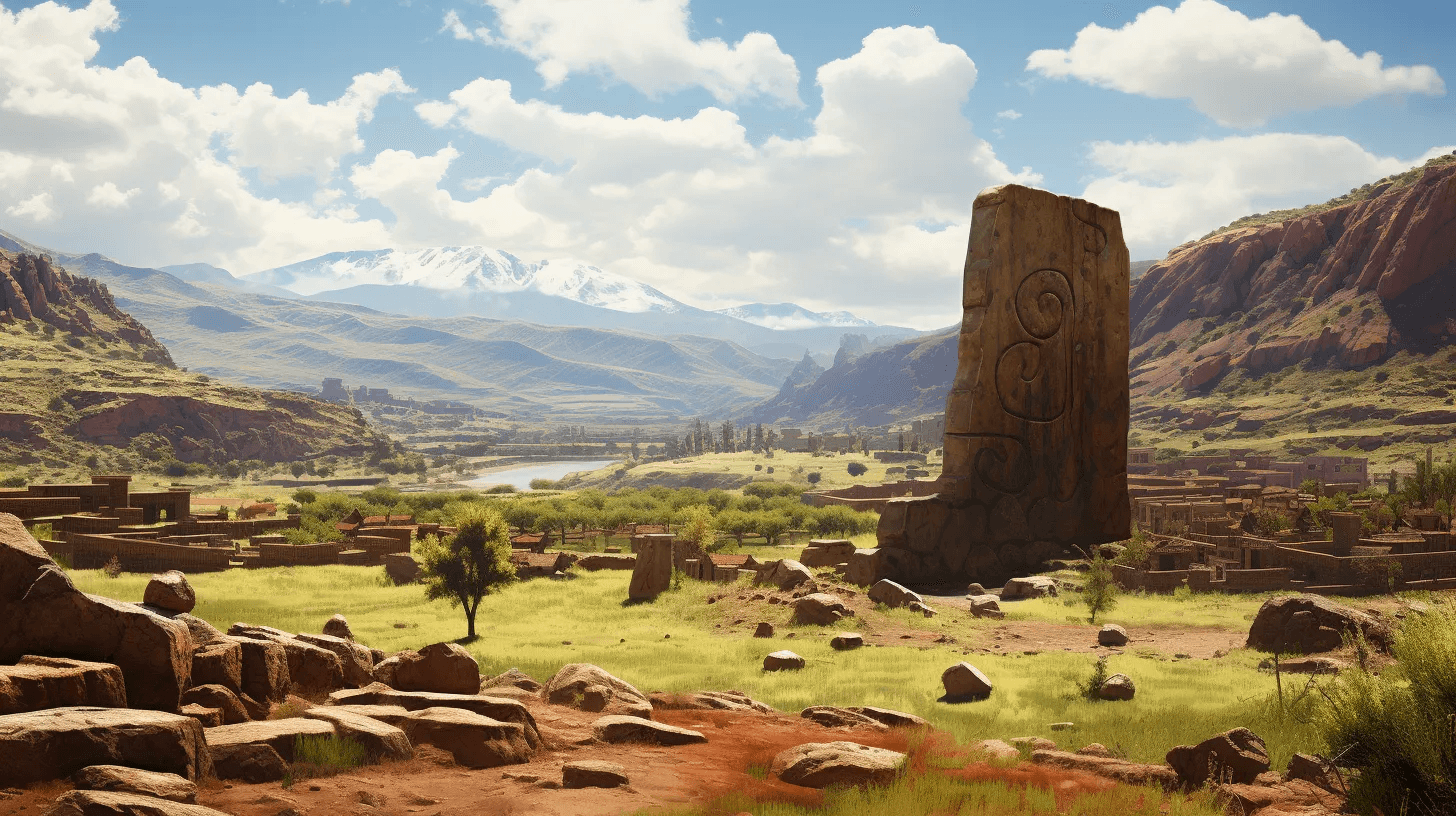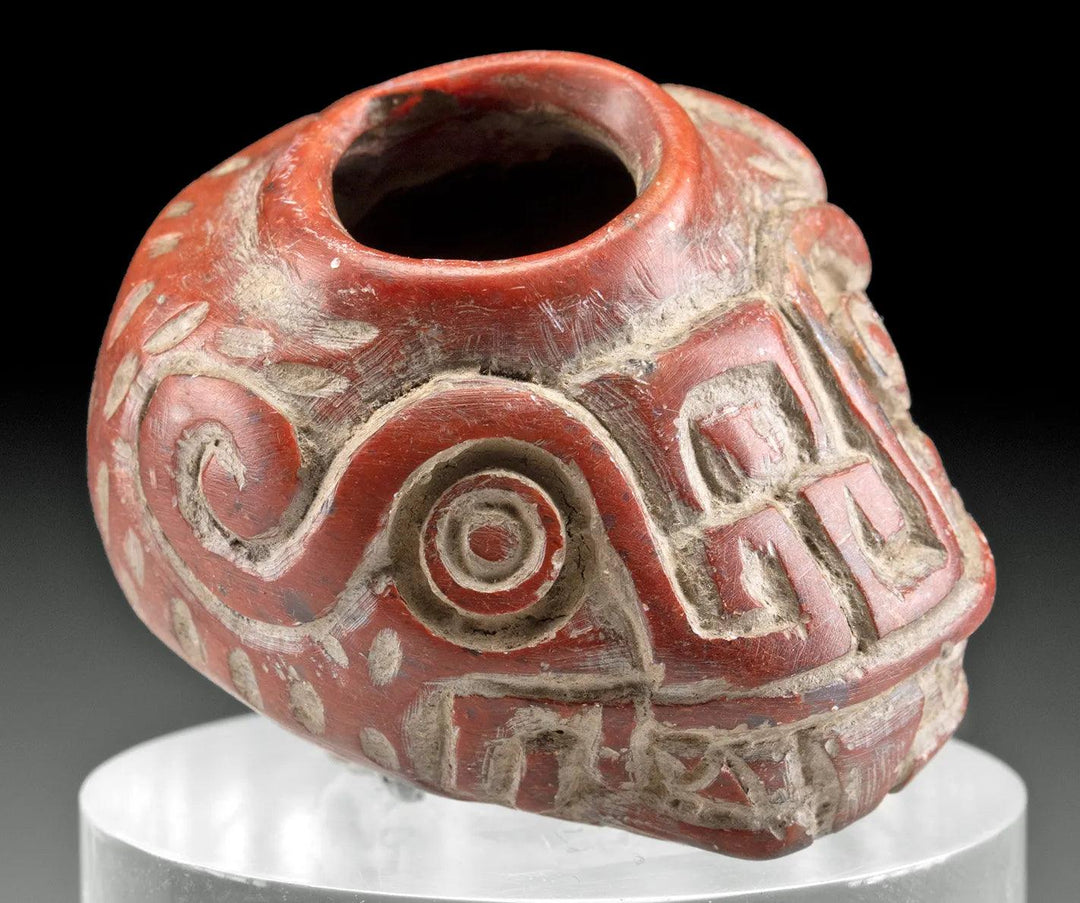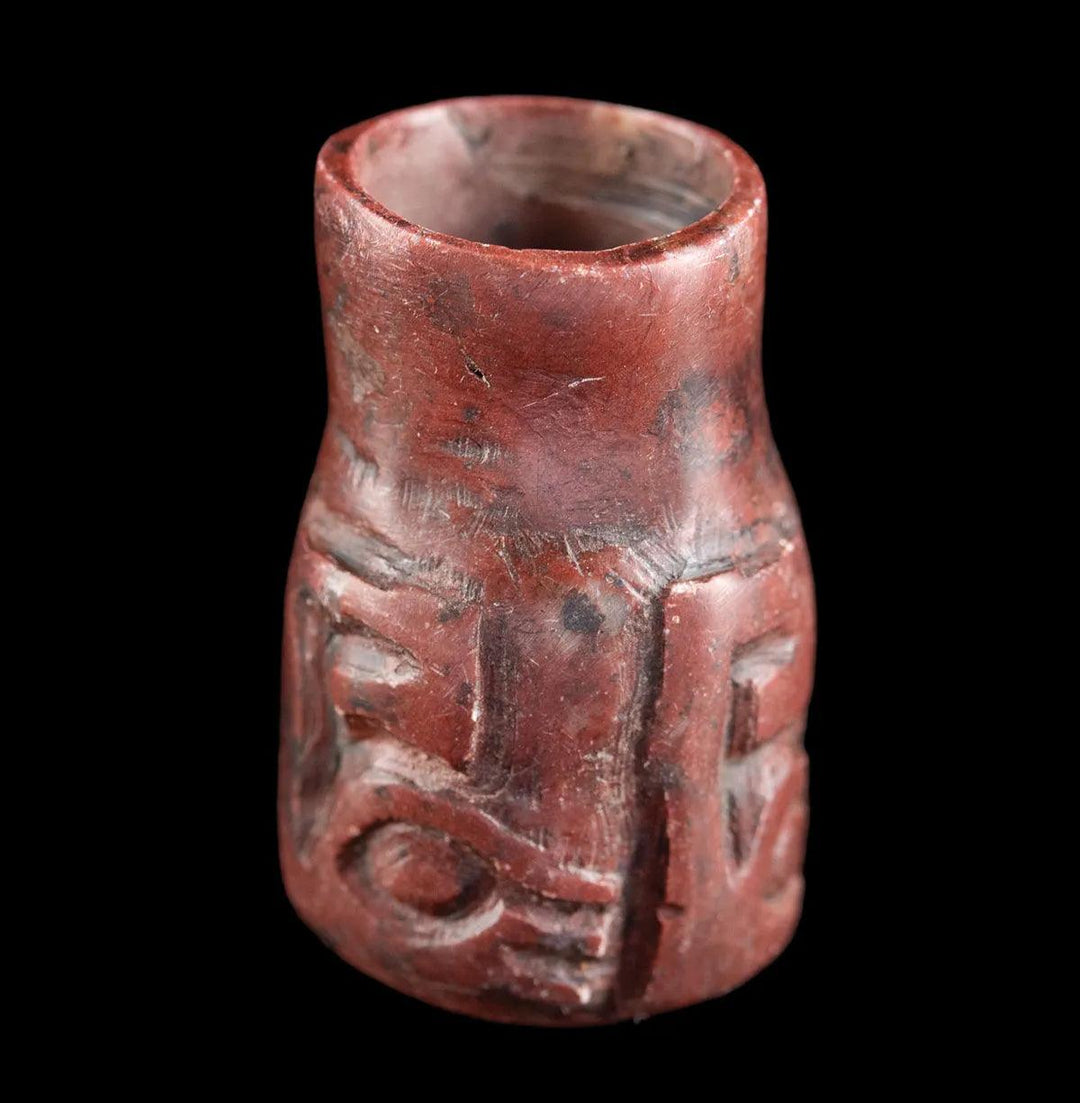
Chavin: Artifacts from the First Great Andean Civilization
Unearth the mysteries of ancient Chavín with our collection of authentic artifacts. Dive deep into a culture celebrated for its iconic temples, intricate stone carvings, and transformative influence on Andean civilizations.
Chavín - nestled in the highlands of present-day northern Peru, was a thriving civilization that existed between approximately 1200 BC and 200 BC. As one of the earliest and most influential pre-Columbian cultures in the Andes, Chavín set the stage for subsequent Andean civilizations with its religious, artistic, and architectural innovations.
Key Highlights:
- Chavín de Huántar: This monumental temple complex, with its intricate network of underground passages and distinctive stone carvings, stands as a testament to Chavín's religious and architectural prowess.
- Lanzón Monolith: A central figure in Chavín de Huántar, this carved stone stele depicts a deity that embodies both human and jaguar features.
- Ceramic Art: Chavín artisans are renowned for their detailed ceramic vessels, often adorned with depictions of deities, animals, and mythological motifs.
- Shell and Stone Jewelry: Reflecting Chavín's extensive trade networks, jewelry made of Spondylus shells and precious stones were symbols of status and religious significance.
Regions: Chavín's influence extended beyond its heartland, impacting various regions of ancient Peru:
- Northern Andes: The core region of Chavín, home to the iconic Chavín de Huántar temple complex.
- Central Coast: Areas influenced by Chavín's art, religion, and trade networks.
- Southern Highlands: Regions that adopted and adapted various elements of Chavín's cultural and artistic practices.
Valued Materials: The Chavín culture, with its rich artistic traditions, prized various materials:
- Stone: Predominantly used for architectural constructions, stelae, and intricate carvings.
- Ceramics: Employed for crafting detailed pottery and ritualistic vessels.
- Spondylus Shells: Sourced from the distant coasts and used in jewelry and offerings.
- Obsidian and Turquoise: Utilized for crafting tools, ornaments, and ceremonial items.
Relevant Time Periods: The history of Chavín can be divided based on archaeological phases and findings:
- Initial Period (c. 1200–900 BC): The formative years of Chavín's cultural and religious development.
- Early Horizon (c. 900–200 BC): The peak of Chavín's influence, marked by the construction of Chavín de Huántar and the widespread dissemination of its art and religion.
Step into our curated collection of Chavín artifacts, each echoing tales of ancient priests, ceremonies, and the harmonious blend of nature and divinity. From the mesmerizing stone carvings of deities to the intricate designs of ceramic vessels, immerse yourself in the rich heritage of a civilization that laid the foundation for Andean culture.





